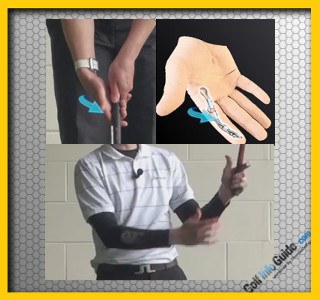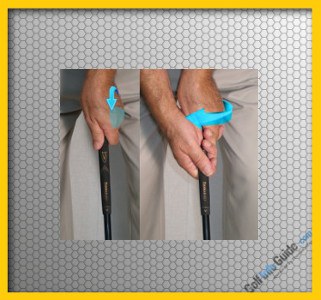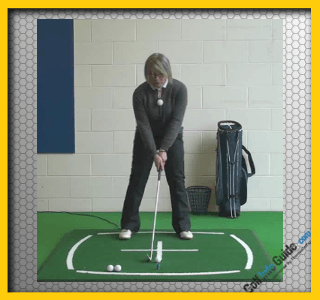Majority of professionals and elite amateur golfer’s that grew up were likely taught a strong golf grip. Though many of them naturally gripped it that way due to playing other sports such as baseball, tennis or hockey.
It’s been proven that a strong grip has many benefits that include a consistent right to left ball flight, ability to hit lower shots, better touch and distance control with wedges. It also presents a couple disadvantages such as untimely severe right to left or snap hooks and weak rotation of the arms through impact resulting in a loss of power or blocked shots to the right. However, many instructors still preach that this is the best way to learn the grip as it keeps the club face very square through impact. A great example of players that utilize a strong grip are Major Champions Paul Azinger, David Duval and Zach Johnson.
To achieve a stronger grip in golf and enjoy a little more consistency with your game, just follow these easy tips below.

One of the worst habits we see in avid golfers when it comes to the grip, is they tend to hold the club more in the palm of the hand rather than in the fingers. When a player grips the club in the palms we see them lose flexibility in the wrist which prohibits getting the club into good position during the backswing. Just try gripping a hammer in your palm and see how much success you have hitting the nail. Then try gripping a hammer in your fingers and you’ll be surprised with the increase in power and accuracy.
To achieve a solid neutral to strong grip, the first step is to grab the club’s grip with your left hand (right hand for left handed golfers) and run the grip on a slight diagonal along the base of your fingers. Next, wrap your fingers around the grip then place your thumb on top. A good exercise to see if you have a good grip with your lead hand is to stand straight with your arms at your side. Lift the club up and if you can get the club parallel to the ground or past, you have enough range of motion in your wrist.
The next step is to take your right hand (left hand for left handed golfers) and simply ensure the grip of the club runs along the base of your fingers. Next, wrap your hand over until your right thumb covers your left thumb. This should give you the sense of well-connected and unified hands on the club.

When you set up to the golf ball, how many knuckles on your lead hand do you see? By lead hand, we’re referring to the hand closest to the target. If you followed the steps in Tip #1 and you only see one or two knuckles, then it’s a high possibility you have the club gripped in your palm resulting in a weaker grip. Ideally, for a stronger grip we prefer to have three knuckles visible on our lead hand when looking straight down. If you see four knuckles, then you have gripped the club too strong.

Tip #3 Parallel Lines Pointing at Right Shoulder
Another check point in determining if you have a solid neutral to strong grip, is to see if the creases or lines made between your thumbs and forefinger are lined up. This can be checked by getting into your setup and if correct ensures your hands are working together as a unit.
First, these creases should be parallel to one another, which means your hands are likely to work together during the golf swing. Second, the lines should be pointing at your right shoulder (left shoulder for left handed golfers). If the lines are pointing at your chin, it means you’re too weak. If the lines are going in two different directions, it means one of your hands is not on the club properly and we suggest re-reading Tip #1.

Tip #4 Shaft Lean to the Target
The final step to ensuring solid contact with a strong grip, is that we give the shaft of our golf club a slight lean toward the target. When a person has a relatively strong grip they have the tendency to get the club too neutral or even behind the ball at setup. One thing to remember is that the club will be delivered back to where it started. If the club begins too neutral it will cause a wide variety of miss hits i.e. thin, hook or too high.
To achieve a proper shaft lean, make sure your hands are ahead of your belt buckle. To give you a good visual, when Jack Nicklaus was hitting his irons he always wanted his hands to cover his left knee at address.






